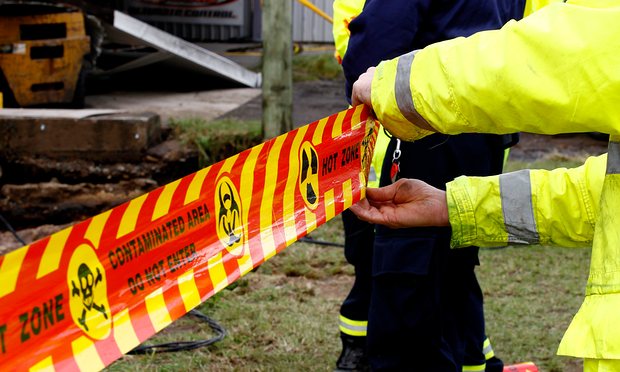The news that asbestos is slipping through our borders in cheap building materials from China and India means it remains an issue fraught with tragedy.
The revelation that some building materials imported to Australia are contaminated with asbestos shows the fight to eradicate this deadly mineral is not only far from over, it cannot be limited by national boundaries, particularly when we live in a global economy.
Australian authorities have put a hold on Yuanda China building materials after asbestos was discovered in some of its supplies to two major construction projects, including – of all places – at the Perth Children’s Hospital.
As someone who has spent my entire career seeking justice for those afflicted by the awful diseases associated with asbestos and witnessing first-hand its devastating effect on families, it’s hard to quantify how deeply frustrating and concerning it is to read that these contaminated products are slipping through our borders.
But despite that deep disappointment, I must admit these revelations haven’t come as a complete surprise. After all, China and India are among the top five producers of asbestos in the world.
For many of our neighbours, asbestos remains an accessible and cheap building material – two particularly attractive features when a country is in the grip of rapid development and industrialisation. India, China, Indonesia and Thailand are all importing asbestos at a phenomenal rate with devastating consequences for its workers and people.
The World Health Organisation estimates a staggering 125 million people around the world are exposed to asbestos in the workplace each year. And as dreadful as that figure is, in reality it’s probably much greater since asbestos has such an insidious reach.
So when we superimpose this picture of so-called “bystander“ exposure on to the World Health Organisation’s statistics we’re looking at a phenomenon of catastrophic proportions for decades to come.
While Australia stopped using asbestos in building materials in the 1980s, it was only 13 years ago that we banned it entirely. It took years of campaigning and the repeated airing of the tragic individual stories of disease and death before we reached that goal.
Clearly, the recent revelation about contaminated imports raises questions about the resourcing of our relevant agencies. An independent review of Australia’s asbestos border controls is calling for prosecutions to be pursued more vigorouslyand more information to be given to the suppliers. It also found that Australian Border Force did not have the “time and resources” to stop asbestos slipping through our borders.
But once we strengthen procedures for testing imports and reiterate the Australian asbestos ban to overseas exporters, what next? Surely it’s time to turn our attention to helping the campaign to bring a world-wide end to the mining and the use of asbestos.
In recent years, there have been a number of efforts to bring about such change from global organisations, including the World Health Organisation. But these campaigns are still nascent and will no doubt need the persuasive power that comes with direct diplomatic and trade relations between governments. It’s time for all our domestic stakeholders from government and business through to the union movement and medical and legal experts to help local campaigners in their fight.
The key will be not only convincing our neighbouring governments that it is both cruel and uneconomical in the long term to allow asbestos use to continue, but that there are safer substitutes. This will require the efforts of many more than Australia, but we owe it to our citizens and our neighbours in the South East Asian region to push for this change.
Sadly, it is not yet time to rest easy when it comes to asbestos. The use of asbestos is far from a legacy issue – tragically, it will remain a critical public health issue in our region for many years to come and that means it’s an issue Australia can’t afford to ignore.
Source: The Guardian



